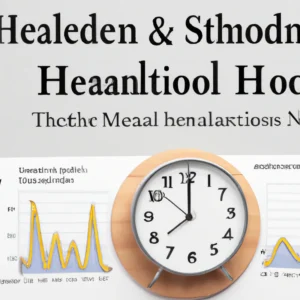Boost Your Fiber: Delight in Flexible Dieting!
The Role of Fiber in Flexible Dieting: How to Incorporate More Fiber While Hitting Your Macros
Flexible dieting has become popular in the health and fitness community. This approach encourages tracking macronutrients—proteins, fats, and carbohydrates—while allowing food variety. Many people, however, overlook fiber’s importance. Fiber plays a crucial role in overall health and enhances your flexible dieting experience. This post explores how to add more fiber to your diet while meeting your macros.
Understanding Fiber
Fiber is a carbohydrate that the body cannot digest. It exists in two forms: soluble and insoluble. Soluble fiber dissolves in water and helps lower cholesterol and control blood sugar levels. Insoluble fiber adds bulk to stool and aids digestion. Both types are essential for a balanced diet.
Adding fiber to your meals promotes digestive health and keeps you feeling full longer. This helps when managing calorie intake. Fiber-rich foods typically contain fewer calories, allowing larger portions while staying within your macro limits.
Tips for Boosting Fiber Intake
Choose Whole Grains
Replace refined grains with whole grains. Whole grains, like brown rice, quinoa, and whole wheat bread, contain more fiber. A slice of whole-grain bread offers about 3 grams of fiber, while white bread has less than 1 gram. Transitioning to whole grains significantly increases your fiber intake.
Add Fruits and Vegetables
Fruits and vegetables provide excellent fiber sources. Fill half your plate with these nutrient-dense foods. Apples, pears, berries, carrots, and broccoli are high in fiber. One medium apple contains around 4 grams of fiber. Including various colors boosts fiber and enhances your meals’ nutritional value.
Snack Wisely
Snacking increases fiber intake easily. Choose nuts, seeds, or popcorn instead of chips or cookies. A 1-ounce serving of almonds has about 3.5 grams of fiber, while 3 cups of air-popped popcorn have around 3 grams. These snacks fill you up and won’t derail your macro goals.
Use Supplements if Necessary
If you struggle to meet your fiber needs through food, consider fiber supplements. Products like psyllium husk or inulin can help. However, prioritize getting fiber from whole foods. Use supplements to complement, not replace, a balanced diet.
Advice for Hitting Your Macros
While increasing fiber, keep your macronutrient goals in mind. Here are some strategies:
1. **Track Your Intake**: Use a food diary or app to monitor your fiber intake. This practice helps you stay accountable and make adjustments.
2. **Plan Your Meals**: Add fiber-rich foods into your meal planning. Prepare meals in advance that align with your macro goals. This strategy prevents reaching for low-fiber, processed options.
3. **Balance Your Plate**: Ensure your meals include a good mix of protein, fats, and carbohydrates. Adding fiber-rich foods helps you achieve this balance while increasing meal volume.
Benefits of Fiber in Flexible Dieting
Adding more fiber to your flexible diet provides numerous benefits. Firstly, fiber aids digestion, prevents constipation, and promotes regular bowel movements. Secondly, fiber-rich foods help regulate blood sugar levels, useful for those sensitive to spikes.
Additionally, fiber promotes satiety, meaning you feel fuller for longer. This helps control hunger and reduce overall calorie intake. Moreover, high-fiber diets often associate with lower cholesterol levels, reducing heart disease risk.
Finally, a fiber-rich diet supports weight management. Consuming more fiber allows larger food portions without exceeding calorie goals. This helps you stick to your flexible dieting plan more easily.
Conclusion
Fiber plays an essential role in flexible dieting. By adding more fiber-rich foods, you enhance your overall health while hitting your macronutrient goals. Focus on whole grains, fruits, vegetables, and smart snacking to boost fiber intake. Track your progress and plan your meals carefully. With these strategies, enjoy fiber’s benefits while maintaining a flexible and enjoyable diet. Embrace fiber’s power and watch your health improve.
Below are related products based on this post:
FAQ
What are the two types of fiber, and how do they benefit health?
Fiber exists in two forms: soluble and insoluble. Soluble fiber dissolves in water and helps lower cholesterol and control blood sugar levels, while insoluble fiber adds bulk to stool and aids digestion. Both types are essential for a balanced diet and contribute to overall digestive health.
How can I increase my fiber intake while following a flexible dieting approach?
You can boost your fiber intake by choosing whole grains over refined grains, adding a variety of fruits and vegetables to your meals, and opting for fiber-rich snacks like nuts, seeds, or popcorn. Additionally, planning your meals and tracking your fiber intake can help you stay on track with your macronutrient goals.
What are the benefits of incorporating more fiber into my diet?
Incorporating more fiber into your diet aids digestion, prevents constipation, and promotes regular bowel movements. It also helps regulate blood sugar levels, promotes satiety (keeping you fuller for longer), and may reduce cholesterol levels, ultimately supporting weight management and overall health.















Post Comment